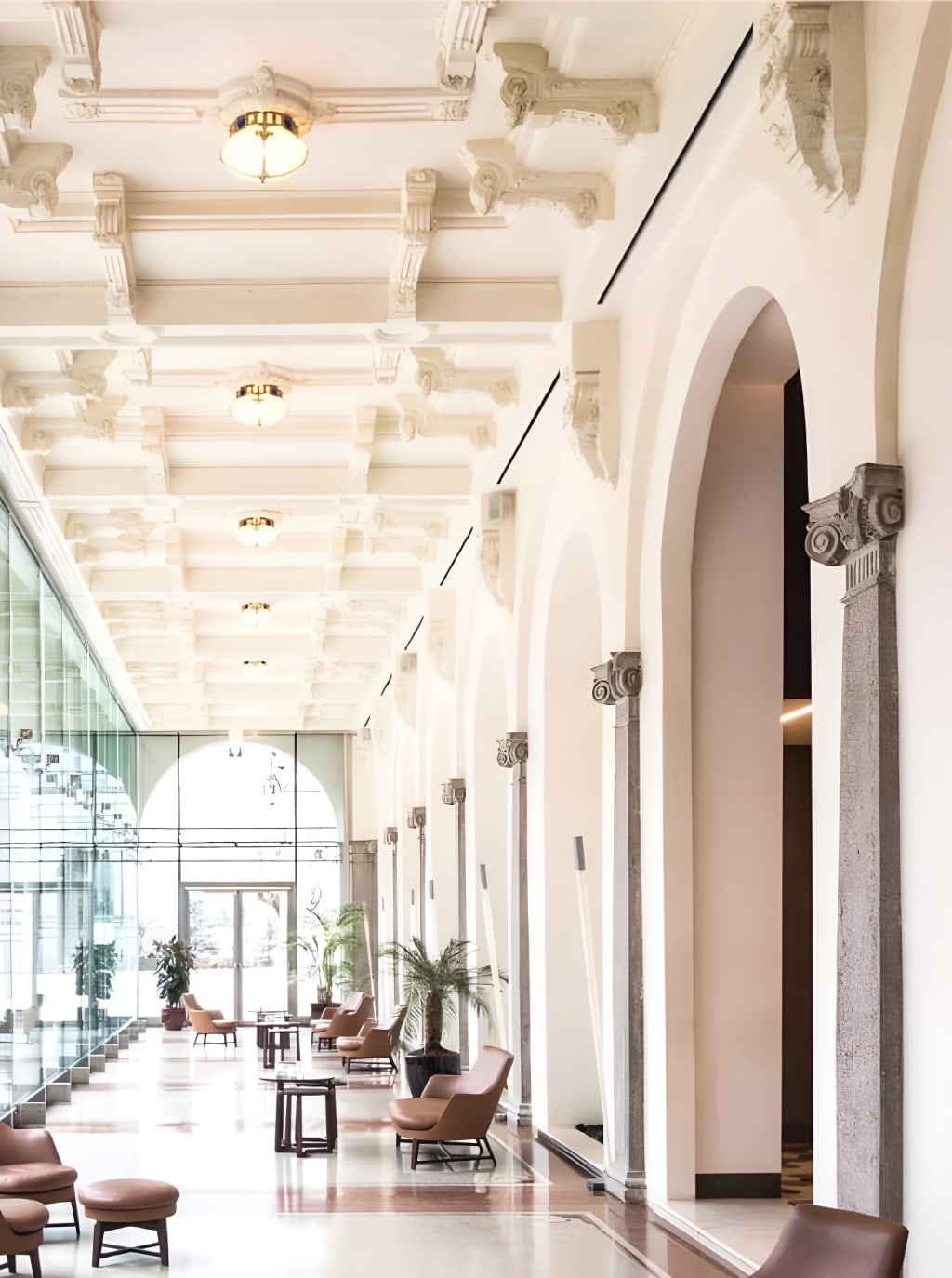Prologue to Polyurethane Utilization in Beautifying Items
How to construct using foam

Polyurethane, a versatile and widely utilized material, has become a game-changer in the world of decorative items. From furniture to home décor and building applications, polyurethane offers a plethora of advantages that enhance the style and durability of various objects. This introductory article aims to provide a comprehensive overview of polyurethane utilization in decorative items. We will delve into the basics of polyurethane, explore its versatility in different applications, examine its role in furniture and home décor, discuss its architectural uses, analyze its benefits and limitations, provide guidance on choosing and applying polyurethane coatings, and even delve into future trends and advancements in this amazing field.
Whether you are a design enthusiast, a furniture manufacturer, or simply curious about the transformative power of polyurethane, this article will equip you with the knowledge and insights to appreciate and utilize this truly incredible material.
The Basics of Polyurethane: An Introduction to the Material
What is Polyurethane?
Polyurethane is a versatile material that is widely used in various industries, including construction, automotive, and furniture. But what exactly is polyurethane? Essentially, it is a type of polymer formed by combining a polyol (a type of alcohol) with a diisocyanate (a chemical compound). This chemical reaction results in a highly flexible and durable material that can be molded into various shapes and used in a multitude of applications.
The Composition and Characteristics of Polyurethane
Polyurethane can vary in composition and characteristics depending on the specific formulation. However, most polyurethanes share several common traits. They are known for their excellent resistance to wear, tear, and abrasion, making them ideal for applications that require durability. Polyurethane is also highly resistant to water, chemicals, and UV radiation, making it suitable for both indoor and outdoor use. Additionally, polyurethane has good thermal insulation properties and can be manufactured in various densities, from rigid foams to flexible elastomers.
Different Types of Polyurethane
There are numerous types of polyurethane available in the market, each with its own unique properties and applications. Some common types include flexible polyurethane foam, rigid polyurethane foam, polyurethane coatings, and polyurethane adhesives. Flexible polyurethane foam is commonly used in furniture cushions and mattresses, while rigid polyurethane foam is often used for insulation purposes. Polyurethane coatings provide a protective layer on surfaces, while polyurethane adhesives offer areas of strength for bonding purposes. The versatility of polyurethane allows it to be tailored to meet specific requirements in different industries.
Embracing Polyurethane's Versatility in Decorative Items
The Benefits of Incorporating Polyurethane in Decorative Items
When it comes to decorative items, polyurethane offers a multitude of benefits. Firstly, it is lightweight, allowing for easier installation and handling. Additionally, polyurethane is highly resistant to moisture, cracking, and warping, ensuring that the decorative items remain in top condition even in humid conditions. Moreover, polyurethane is available in a myriad of textures, finishes, and colors, making it adaptable to various design styles. It can emulate the appearance of natural materials like wood or stone, but without the associated maintenance and cost.
Common Uses of Polyurethane in Decorative Items
Polyurethane is frequently used in decorative items due to its ability to enhance the overall aesthetics and durability. It can be found in architectural moldings, such as crown molding, chair rails, and baseboards, adding an elegant touch to interior spaces. Polyurethane decorative elements are also popular in furniture design, where they can be used for accents, trims, or even entire pieces. Furthermore, polyurethane is often utilized in ceiling medallions, corbels, and rosettes to create eye-catching focal points in homes and buildings.
Examples of Decorative Items Using Polyurethane
Polyurethane's versatility is showcased in the thousands of decorative items available in the market. From intricately designed ceiling tiles and ornate columns to intricately carved wall panels and decorative components, polyurethane offers endless design possibilities. Companies specializing in polyurethane decorative items offer a vast selection of styles, enabling homeowners and designers to find the perfect pieces to complement any interior or exterior design scheme. Whether you're looking for classic elegance or modern style, there's a polyurethane decorative product to suit every taste.
Stay tuned for the upcoming sections to delve deeper into polyurethane's role in furniture manufacturing and home décor projects! Polyurethane in Architectural Applications: Enhancing Design Options
When it comes to adding a touch of elegance and excitement to architectural designs, polyurethane is a material that architects and designers turn to. Its versatility and ability to mimic traditional architectural elements make it a popular choice for decorative features.
Architectural Uses of Polyurethane in Decorative Components
Polyurethane can be found in various decorative components used in architecture to enhance the visual appeal of buildings. Some common architectural uses of polyurethane include:
1. Crown Molding: Polyurethane crown molding is a popular choice for adding a decorative touch to the junction between walls and ceilings. It can be easily installed and comes in a variety of designs and sizes to suit different architectural styles.
2. Columns and Pilasters: Polyurethane columns and pilasters are lightweight alternatives to traditional stone or wood columns. They can be used to create grand entrances, support structures, or simply add a touch of elegance to a space.
3. Ceiling Medallions: Polyurethane ceiling medallions are decorative elements that are typically installed around light fixtures or ceiling fans. They add a focal point to the ceiling and can be found in various designs, from simple to elaborate.
4. Corbels and Brackets: Polyurethane corbels and brackets are used to support architectural features such as shelves, countertops, or roof overhangs. They come in a range of styles and sizes, allowing for both functional support and aesthetic enhancement.
5. Balusters and Railings: Polyurethane balusters and railings can be used for both interior and exterior applications. They provide safety and support for stairs, balconies, and porches while adding a decorative element to the overall design.
6. Wall Panels: Polyurethane wall panels are an excellent choice for adding texture and visual interest to walls. They can mimic the appearance of traditional materials like stone or wood, offering a cost-effective and lightweight alternative.
Advantages of Using Polyurethane in Architectural Applications
Polyurethane offers several advantages when used in architectural applications:
1. Lightweight: Polyurethane is significantly lighter than traditional materials such as stone or wood, making it easier to handle and install. This characteristic also reduces the load on the building's structure.
2. Durability: Polyurethane is highly resistant to moisture, insects, and rot, ensuring its longevity and minimizing the need for frequent maintenance or replacement.
3. Versatility: Polyurethane can be molded into a wide range of shapes and designs, allowing for intricate detailing and customization. It can be easily painted or stained to match the desired color scheme.
4. Cost-Effectiveness: Polyurethane is often more affordable than natural materials like wood or stone, making it a cost-effective choice for architectural applications. It provides the look of luxury materials without the associated high costs.
5. Easy Installation: Polyurethane components are typically lightweight and easy to install. They can be cut, drilled, and glued using standard tools, reducing both labor and installation time.
Considerations for Using Polyurethane in Architectural Applications
While polyurethane offers numerous advantages, there are a few considerations to keep in mind when using it in architectural applications:
1. Fire Resistance: Standard polyurethane products are not inherently fire-resistant. However, fire-rated polyurethane options are available and should be used in applications where fire safety is a concern.
2. Painting and Finishing: Polyurethane components often require painting or finishing to achieve the desired appearance. Proper surface preparation and the use of compatible paints or finishes are essential for achieving a long-lasting and professional result.
3. Installation: It is important to follow the manufacturer's instructions for installation to ensure proper adhesion and structural integrity. Using appropriate adhesives and fasteners, as recommended by the manufacturer, is crucial for a successful installation.
**Polyurethane in architectural applications offers an opportunity to elevate the design aesthetic of buildings while providing durability and cost-effectiveness. With its versatility and wide range of decorative components available, polyurethane continues to be a favored choice for architects, designers, and homeowners seeking to enhance the beauty of their spaces.
About the Creator
Mohamed Abdelhameed
Hi, I’m a father, an engineer, and a writer. Sounds like a lot, right? Well, I like to keep myself busy and challenge my creativity. I have always been passionate about writing,. Writing is my way of expressing myself, and having fun.






Comments (3)
share your opinions and thoughts with me, I will be happy to hear from you
This is so Useful, thank you for sharing
Great work! Good job!